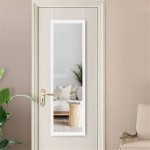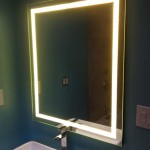How to Mirror iPhone to Macbook Pro (2019)
Mirroring an iPhone's display to a Macbook Pro offers several advantages, from presenting content to a larger audience to recording tutorials and gameplay. Several methods facilitate this screen sharing, each with its own benefits and limitations. This article explores the different approaches to mirroring an iPhone to a 2019 Macbook Pro.
1. Using QuickTime Player
QuickTime Player, pre-installed on macOS, provides a straightforward method for mirroring an iPhone to a Macbook Pro. This approach requires a USB cable connection and offers high-quality mirroring with minimal latency, making it ideal for tasks requiring precise timing and responsiveness.
To use this method, connect the iPhone to the Macbook Pro using a compatible USB cable. Open QuickTime Player. From the menu bar, select "File," then "New Movie Recording." A recording window will appear. Next to the record button, a dropdown arrow will be visible. Click this arrow and select the iPhone as both the camera and microphone source. The iPhone's screen will then be mirrored on the Macbook Pro's display.
While QuickTime Player doesn't allow for direct interaction with the mirrored content on the Macbook Pro's screen, it captures the iPhone's audio output, making it suitable for recording presentations or demonstrations with sound.
2. Utilizing AirPlay with Third-Party Apps
While Apple discontinued direct AirPlay mirroring to Macs with macOS Catalina, third-party applications restore this functionality. These apps, such as Reflector or AirServer, create an AirPlay receiver on the Macbook Pro, allowing users to wirelessly mirror their iPhone's display. This wireless approach offers greater flexibility than a wired connection, allowing users to move freely without being tethered to their computer.
To utilize this method, download and install a compatible AirPlay receiver application on the Macbook Pro. Ensure both the iPhone and Macbook Pro are connected to the same Wi-Fi network. On the iPhone, open the Control Center. Tap the "Screen Mirroring" button. Select the Macbook Pro with the running AirPlay receiver application from the list of available devices. The iPhone’s screen will then be mirrored wirelessly to the Macbook Pro.
Third-party AirPlay receiver applications typically offer additional features like recording the mirrored content, customizing frame rates, and adjusting the streaming quality. However, the quality and latency of the mirrored display can be affected by the strength and stability of the Wi-Fi connection.
3. Mirroring Specific Content with Native Apps
For mirroring specific types of content, certain native macOS applications offer integrated mirroring capabilities without requiring third-party software or hardware. These applications leverage specific protocols and functionalities to display content from compatible iOS apps.
For example, the Photos app on macOS can import photos and videos directly from a connected iPhone. The Finder application allows access to the iPhone's file system, enabling users to browse and transfer files. Additionally, some apps like Keynote and Pages allow direct presentation from iOS devices, providing a streamlined workflow for presentations.
This approach is ideal for users who only need to mirror specific content types, as it eliminates the need for additional software or complex setups. However, this method is limited in its scope, as it doesn't offer a full screen mirroring experience. It only mirrors content that is compatible with the specific macOS application being used.
4. Leveraging the Xcode Simulator
While primarily designed for developers, the Xcode Simulator, included with Xcode, can also mirror an iPhone's display on a Macbook Pro. This method is particularly useful for testing app development and functionality in various simulated iPhone environments.
To utilize Xcode's mirroring capabilities, first install Xcode from the Mac App Store. Connect the iPhone to the Macbook Pro using a USB cable. Open Xcode and select "Window" from the menu bar. Choose "Devices and Simulators." In the left pane, select the connected iPhone. Check the "Connect via network" option. This will enable wireless debugging and mirroring. Subsequently, running an app in the simulator will mirror the app's behavior and display as it would on the connected iPhone.
This method is primarily geared towards app development and testing. While providing an accurate representation of an iPhone's environment, it doesn't mirror the entire iPhone screen, focusing instead on the selected application's performance within the simulated environment.

How To Mirror Iphone Screen Mac Quick Easy Wireless 2024

How To Mirror Iphone Screen Mac Quick Easy Wireless 2024

How To Mirror Iphone Screen Windows Pc Laptop No Mac Required 100 Free 2024

3 Ways To Mirror Iphone Macbook Pro With Steps

How To Mirror Iphone Screen Mac Quick Easy Wireless 2024

2024 Updated How To Mirror Iphone Mac With 5 Methods

How To Screen Mirror Iphone Mac Full Guide

How To Mirror Iphone Mac With Usb Full Guide

Newest How To Mirror Iphone Mac Macbook Airdroid

2024 Updated How To Mirror Iphone Mac With 5 Methods








